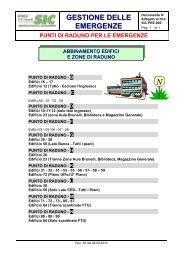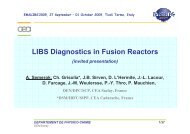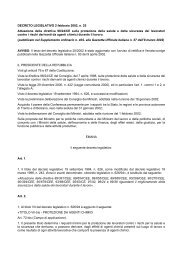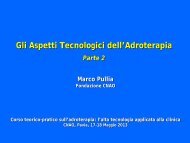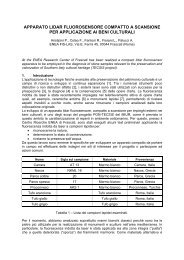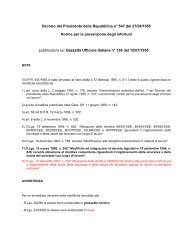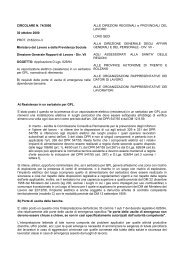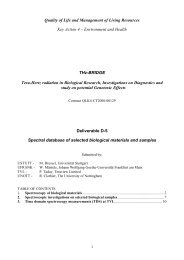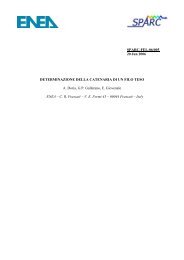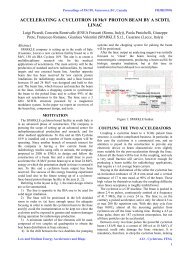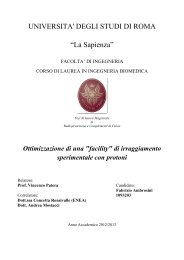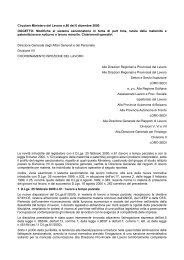Theory, Design and Tests on a Prototype Module of a Compact ...
Theory, Design and Tests on a Prototype Module of a Compact ...
Theory, Design and Tests on a Prototype Module of a Compact ...
Create successful ePaper yourself
Turn your PDF publications into a flip-book with our unique Google optimized e-Paper software.
78 5. RADIOFREQUENCY MEASUREMENT<br />
method gives a reliable k value with a small error. In figure 5.7 a<br />
typical case is reported.<br />
Figure 5.7. The result <strong>of</strong> parabola method applied to<br />
two coupled cavities. The coupling coefficient <str<strong>on</strong>g>and</str<strong>on</strong>g> the<br />
minimum frequency, which is the <strong>on</strong>e <strong>of</strong> the π/2 mode,<br />
are reported.<br />
The method gives an high degree <strong>of</strong> reliability since it is based <strong>on</strong><br />
a set <strong>of</strong> measurement. This means that it is possible, using st<str<strong>on</strong>g>and</str<strong>on</strong>g>ard<br />
techniques, to evaluate the correctness <strong>of</strong> the results <str<strong>on</strong>g>and</str<strong>on</strong>g> the reliability<br />
<strong>of</strong> the procedure. The method can not be applied to cavities whose<br />
frequencies are very different since too large perturbati<strong>on</strong>s could be<br />
necessary to reach the minimum; in this case the behaviour <strong>of</strong> fields in<br />
the perturbed cavity could be too much modified.<br />
3.2. Measurements <strong>on</strong> three coupled cells. In the case <strong>of</strong><br />
three coupled cells with f0, f1 <str<strong>on</strong>g>and</str<strong>on</strong>g> f2 res<strong>on</strong>ant frequencies respectively,<br />
the theory <strong>of</strong> the coupled res<strong>on</strong>ators gives for the res<strong>on</strong>ant frequencies<br />
<strong>of</strong> the coupled structure the following soluti<strong>on</strong>s (valid in the particular<br />
case <strong>of</strong> f0 = f2, for the bridge coupler case, these are the coupling<br />
cavities frequencies):<br />
f0 ˜f =<br />
1 + k2/2<br />
f 2 ± = [f 2 0 + f 2 <br />
1 (1 − k2/2)] ± [f 2 0 − f 2 1 (1 − k2/2)] 2 + 2f 2 0 f 2 1 k2 1<br />
1 − k2/2 − k2 1/2<br />
(5.7)<br />
(5.8)<br />
where f± <str<strong>on</strong>g>and</str<strong>on</strong>g> ˜ f are the measured frequencies, k1 <str<strong>on</strong>g>and</str<strong>on</strong>g> k2 are the coupling<br />
<strong>of</strong> first <str<strong>on</strong>g>and</str<strong>on</strong>g> sec<strong>on</strong>d order <str<strong>on</strong>g>and</str<strong>on</strong>g> f1 is the res<strong>on</strong>ant frequency <strong>of</strong> the bridge<br />
coupler central cavity.



